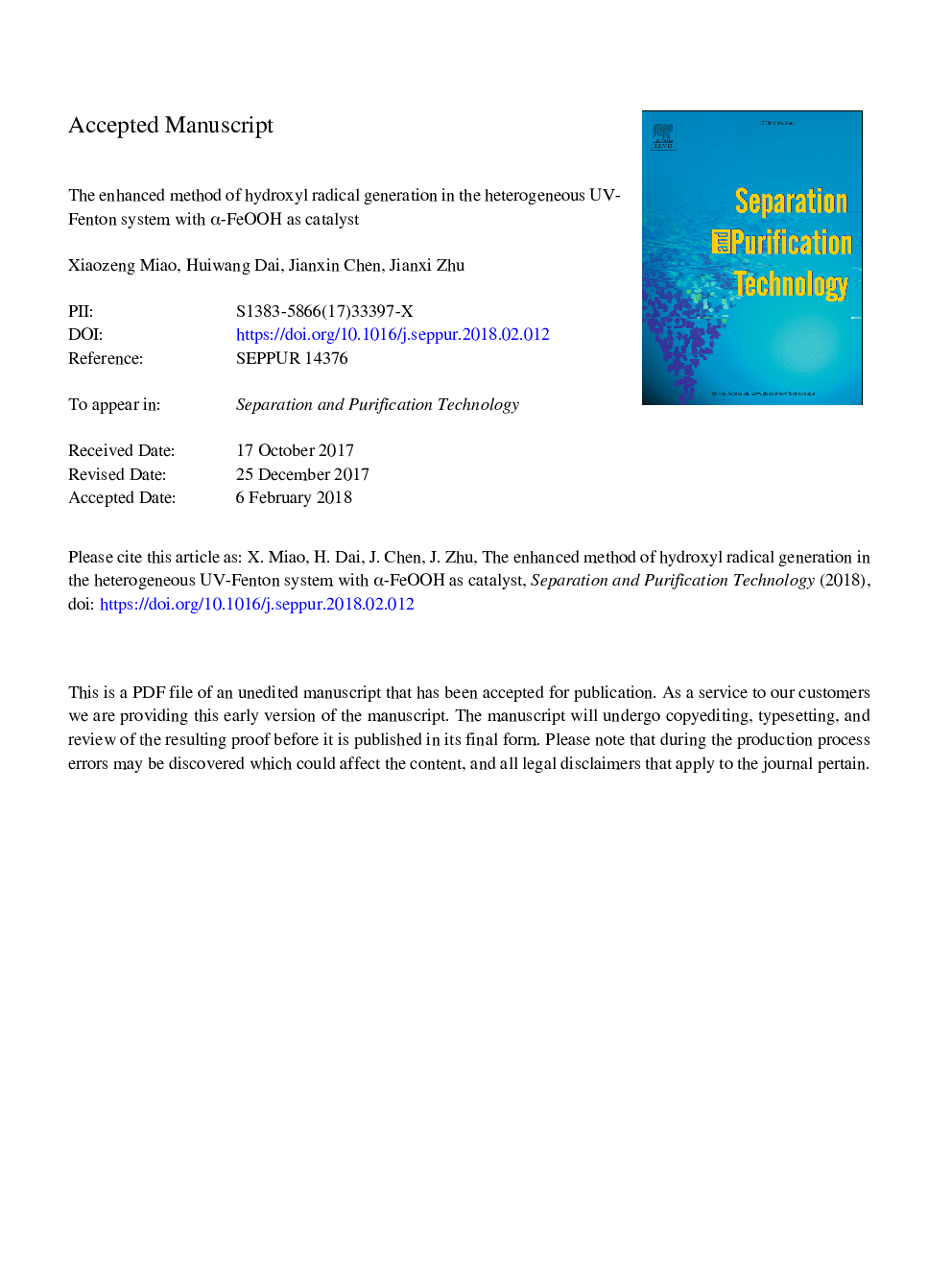| Article ID | Journal | Published Year | Pages | File Type |
|---|---|---|---|---|
| 7043796 | Separation and Purification Technology | 2018 | 39 Pages |
Abstract
An enhanced method of hydroxyl radical generation was studied to lead a better understanding of the catalytic mechanism of α-FeOOH in UV-Fenton system. The catalyst was characterized by X-ray diffraction, X-ray photoelectron spectroscopy, nitrogen adsorption-desorption isotherms and scanning electron microscope. The Orange II degradation and hydroxyl radical concentration under different conditions were studied in detail. The results showed that the hydroxyl radical was mainly oxidizing species for Orange II degradation. And the hydroxyl radical generation included both homogeneous and heterogeneous UV-Fenton processes. In heterogeneous UV-Fenton system, the additional oxalate could increase the ratio of homogeneous UV-Fenton process for hydroxyl radical generation. In oxalate enhanced system, the peak value of hydroxyl radical concentration would increase to 11.314â¯Î¼mol/L which was nearly twice as it in heterogeneous UV-Fenton system (5.978â¯Î¼mol/L). The k values of Orange II discoloration and mineralization increased to 0.386â¯minâ1 and 0.044â¯minâ1, which were 1.169 and 0.692 times as that in heterogeneous UV-Fenton system (0.178â¯minâ1 and 0.026â¯minâ1). After treatment, the total iron ions concentration decreased to 2.357â¯Î¼mol/L in oxalate enhanced system. The results indicated that additional oxalate was a promising enhanced method for hydroxyl radical generation in heterogeneous UV-Fenton system with α-FeOOH as catalyst.
Keywords
Related Topics
Physical Sciences and Engineering
Chemical Engineering
Filtration and Separation
Authors
Xiaozeng Miao, Huiwang Dai, Jianxin Chen, Jianxi Zhu,
